Anatomy of a Crisis: How one MEA bargaining unit built strength to win
THE STORY
One year ago, a group of Oakland County teachers began negotiating a new contract. They had been underpaid for a long time. Their bargaining unit was not tightly organized. They had little union infrastructure or member involvement. Few members even knew what the contract said.
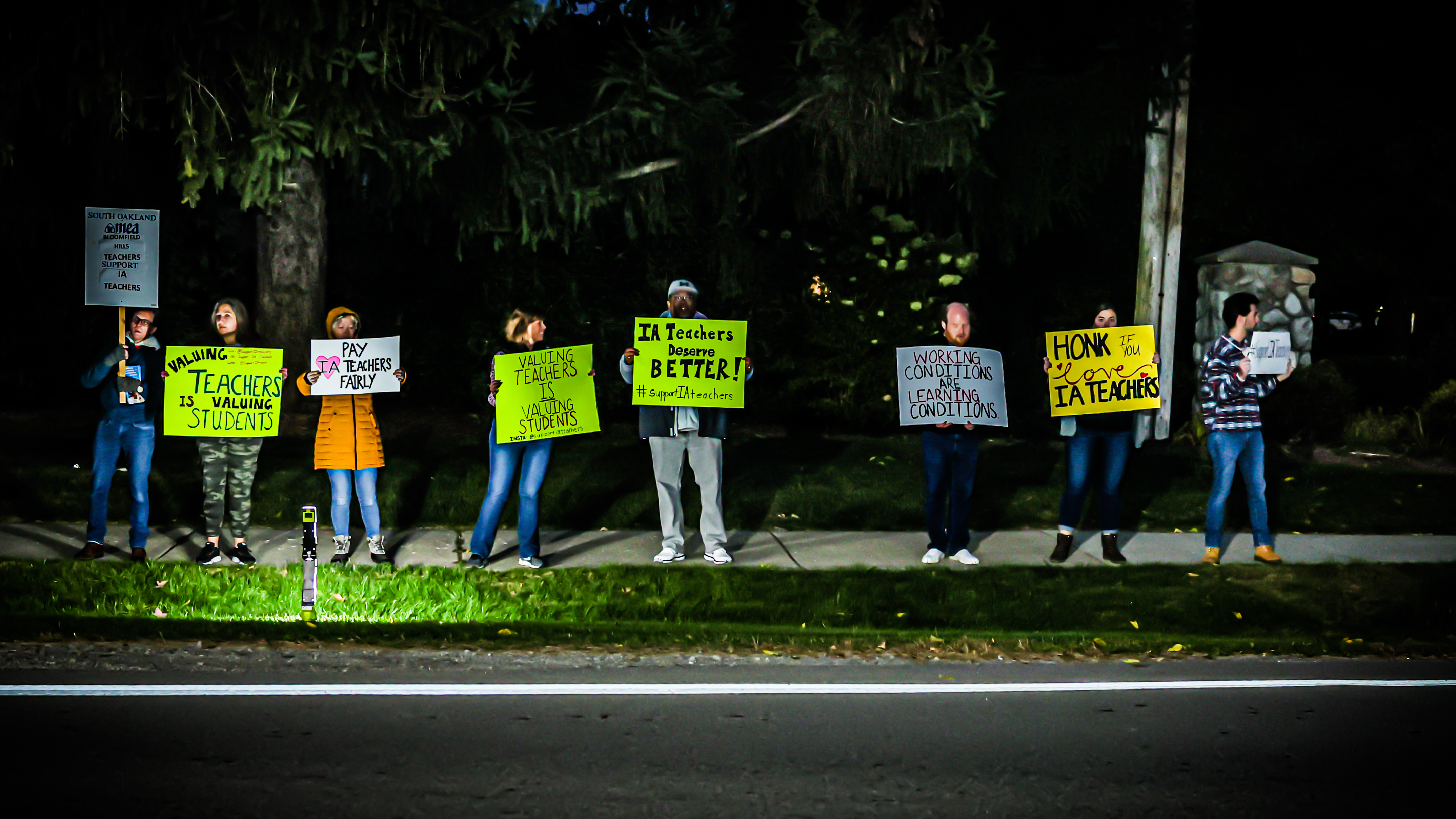
Yet today those educators boast major contract wins plus a newly solidified and strengthened local union at the Oakland International Academy, an International Baccalaureate (IB) school which joins staff and students across three campuses — all comprised from 13 different county school districts.
In the time between going to the bargaining table last April and settling a contract with most of their demands met in November, the team executed a “textbook” crisis operation which can be a model for others across the state, MEA UniServ Director Scott Warrow said.
“We bargained for a while, and the district was offering very little,” Warrow said. “Then the crisis started, and I’ve never seen a group of people organize and implement crisis better than this group. It was amazing.”
The operation worked through phases, starting with unifying and organizing the membership; launching social media and community outreach; and conducting direct action.
With talks going nowhere as the first-day-for-staff professional development day approached on Aug. 15, the team pulled together an initial show of unity. All teachers in the bargaining unit arrived in the parking lot for opening day, dressed in black, and walked in together.
“It sent a big message,” said Catherine Hennessy, a 20-year math teacher who served on the crisis team. “I think the administration was very surprised that we had organized that rapidly and that consistently across everybody. Then that day we had a lunch meeting, and we had a lot of interest in getting involved.”
Key to the group’s success was following Warrow’s advice to ratchet up the actions slowly, added Roger Winn, another crisis team member who’s taught chemistry for 16 years, including seven years at the school. Starting small and building the tension offered at least two benefits right away, he said.
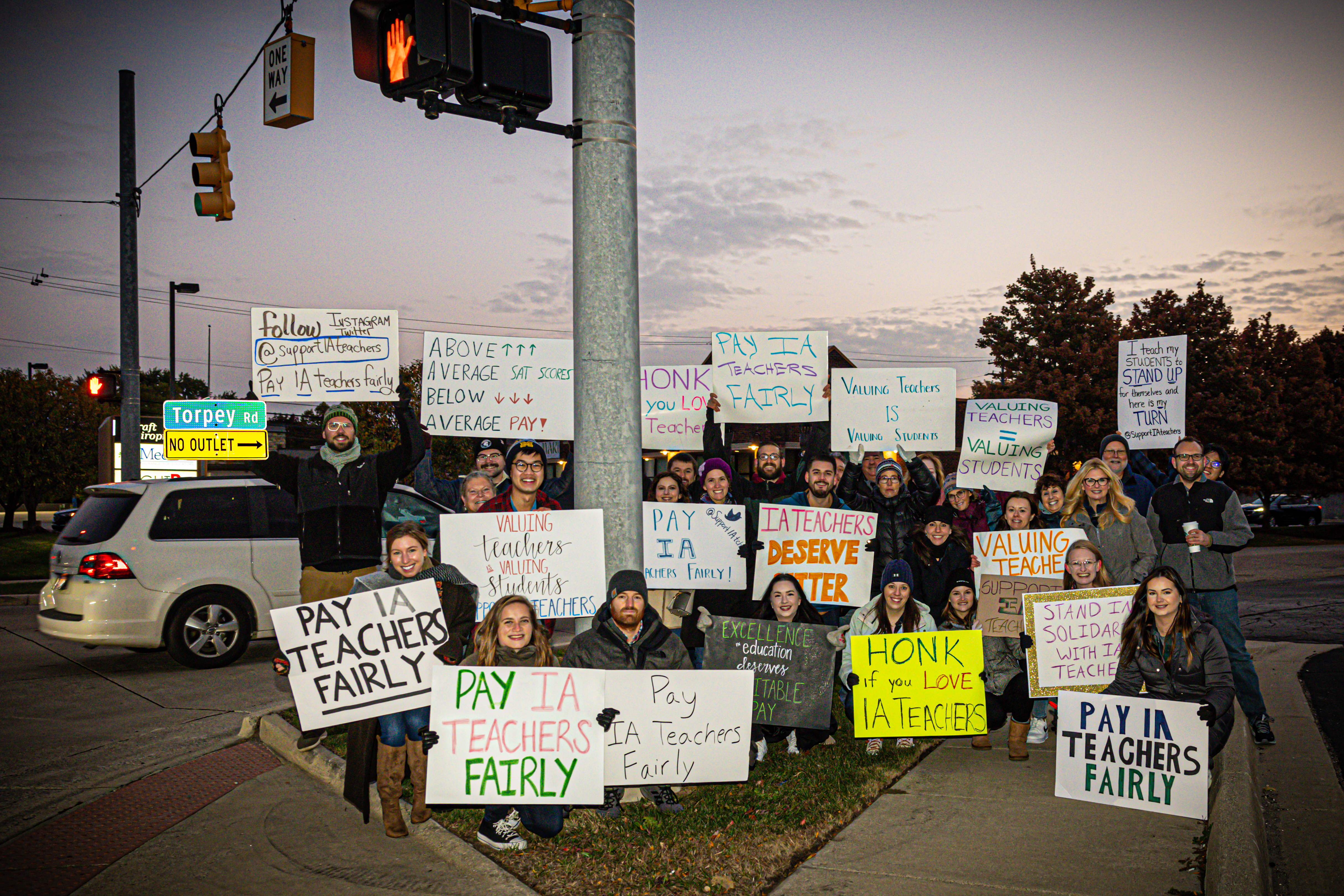 First it showed the union’s willingness to work with the administration by not jumping straight to the most aggressive actions, and it allowed members to develop the comfort and confidence to play a role. Ultimately, holding the membership together and building momentum over time forced the issue, Winn said.
First it showed the union’s willingness to work with the administration by not jumping straight to the most aggressive actions, and it allowed members to develop the comfort and confidence to play a role. Ultimately, holding the membership together and building momentum over time forced the issue, Winn said.
“The administration knew these actions would stop when they met our demands with the bargaining team, but as long as they didn’t this ratchet would keep going up and up and up, until it was time for them to cave, which is what I think eventually happened.”
THE UNIT
The International Academy (IA) is a public IB magnet school which began as one campus in Bloomfield Hills (now know as IA-Central) and later expanded to White Lake (IA-West) and Troy (IA-East). Teachers and students come from 13 home districts in Oakland County.
Rather than a school board, the IA is controlled by a governance council made up of five superintendents from among the home districts.
The school’s unusual structure also applies to the unique way teachers in the bargaining unit are paid. Each works under their home district’s contract plus an additional letter of understanding (LOU) that addresses pay for extra duties and for the longer school day and the extended calendar the staff works.
The IA has always had a longer school day than the typical Michigan high school at seven hours, 50 minutes, requiring staff to stay nearly one hour after school every day; and a longer school year at 190 student days and 192 teacher days.
Combining the additional hours and days required under the LOU from 2017-22 showed the IA teachers worked 20 days more per year than the average of their home districts.
THE BARGAIN
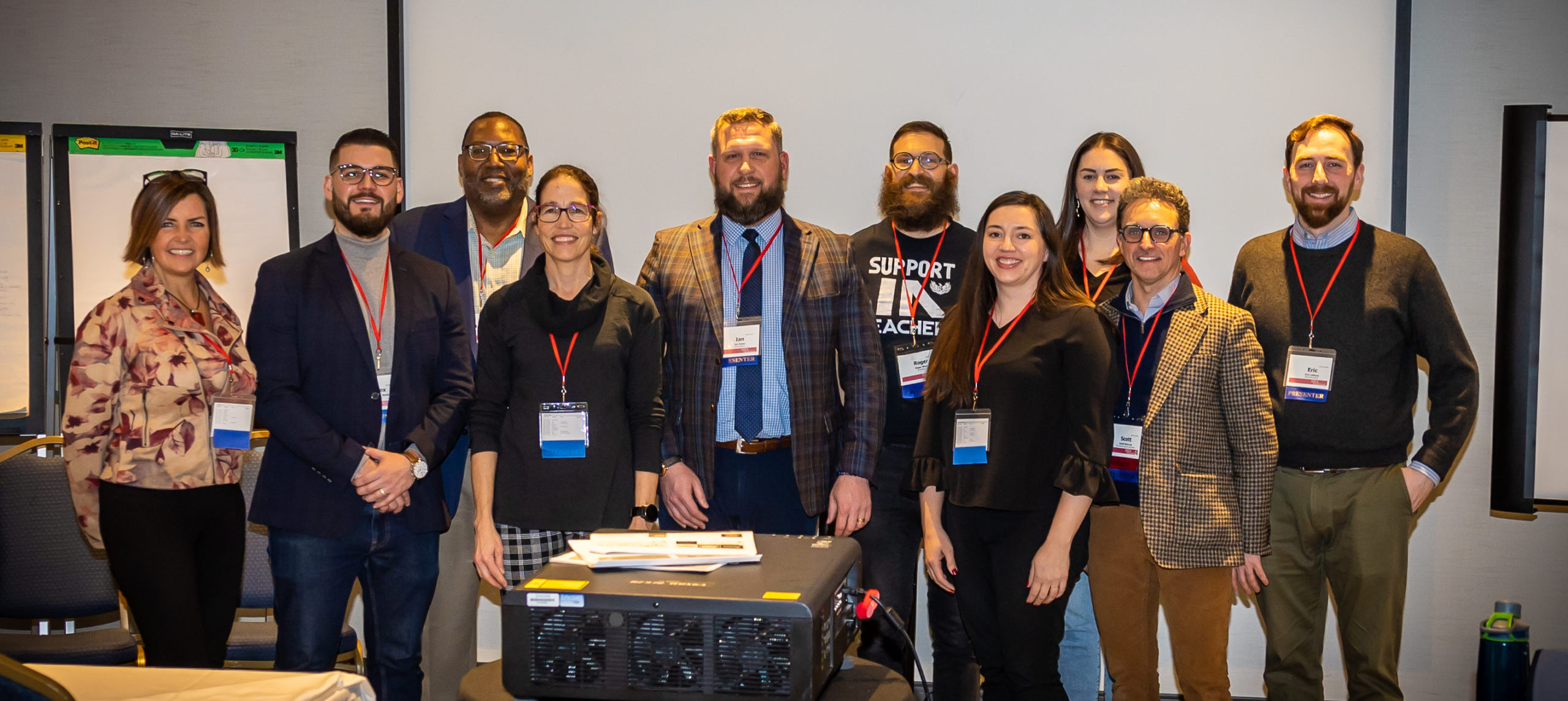
The bargaining team began by calculating the average per diem rate among the 12 contracts from the various members’ home districts to determine what they should have been paid for that extra time vs. what they were being paid.
The 2017-22 LOU compensated a range of $2,350-3,800 for the additional 20 days worked, but the calculations showed the extra time should have been worth more than $6,900. Getting a contract that properly valued their time became a central point of negotiations and crisis.
Talks began in April, and the contract expired in June. Warrow and the team stood firm on what represented a fair wage for added hours while trying to get the administration to back up their position with budget data, according to Eric LaNoue, a music teacher and bargaining team member.
“We kept saying, ‘Here’s what’s fair in terms of time or money — do the math: Do you want more time or less money? But either way, here’s a fair wage,’” LaNoue said. “And they would just say, ‘We can’t do less time and we can’t do more money.’ We’d say ‘Prove it,’ and they couldn’t. They’d just put up a wall by saying, ‘Well, it’s really complicated.’ Or ‘We can’t figure that out.’”
Other goals of the bargain included cleaning up language that was outdated, unfair or minimized educator voice, and adding language to specify certain arrangements that had relied on historical practice. In other words, if it’s not spelled out in the contract, it doesn’t exist, said Maureen Convery, a mid-career English teacher and bargaining team member.
“Certainly when we did all the math and figured out how many hours we were working, and what we were getting paid for it, that was really upsetting,” Convery said. “But also how do we take a lot of this institutional knowledge that exists in our school and make sure that is actually what the contract says?”
The two sides met several times for six-hour sessions over the eight-month span, but at times it appeared proposals from the union bargainers would go untouched between meetings, LaNoue said. “Weeks would pass, and we would be at the exact same position as the last bargaining session.”
Things came to a head as the start of school approached. “We had a bargaining session right before school started, and going into it someone said, ‘If this doesn’t go anywhere, we’re going to have to get a crisis team in place.’ Then we came, and they offered a $50 raise, and it was laughable.
“No forward momentum was happening, they were barely moving at all, and that was the critical point,” LaNoue said. “We were ready to start actions. We knew we needed things to become urgent to them like it was to us.”
THE OBSTACLES
Lack of cohesion across campuses that are spread far apart, combined with recent staff turnover and poor understanding among members of the letter of understanding — or LOU — that operates as the school’s contract, were the first challenges that local leaders in the IA union had to address.
As bargaining began, the team negotiating a new LOU set out to inform IA membership of the existing contract and the calculations which revealed the educators were making roughly $19 an hour for the added time involved with working at the school.
“Teachers sort of inherently go along to get along: ‘Oh, we have less money? The roof is leaking? We don’t have enough books? That’s fine. I don’t have any chairs? Cool — whatever.’ That’s how we are as a profession,” said crisis team member and math teacher Catherine Hennessy.
“Now we had to say, ‘This is not OK. These are the things that we need to make it OK. This is how we can support the bargaining team, but we have to do it together, right? It has to be the whole group.’”
That meant asking people to set aside fears and worries about joining the cause. To succeed, the team needed to make solidarity its own reward and help members feel good about being part of the action.
“When we did that first crisis action on the first‑day PD, we had some people who did it on their first day teaching — ever — which was amazing,” Hennessy said. “We kept emphasizing that solidarity piece again and again so people could see they were part of something bigger — that this will work because we’re doing it together. You’re not putting a target on your back; it’s all of us as a group.”
Chemistry teacher Roger Winn agreed he didn’t understand at the outset how important it would be to give members feedback as actions concluded and next steps were planned. “I knew the crisis team is about action, but an equally important job is to make other people feel comfortable,” Winn said.
“I didn’t realize until I was in the midst of it how important it was to celebrate those actions along the way — letting people know what they were doing was making a difference, because it didn’t always feel that way in the moment — and in that sense helping them build capacity to do more actions as well.”
Communication was key, agreed bargainer and music teacher Eric LaNoue. “People were so informed from the beginning that there was immediately a lot of buy-in,” he said. “People were hyped that we could get a better contract, and there was a lot of hope, so when it converted to crisis that energy shifted over.”
THE CRISIS
To improve the flow of communication in both directions, the crisis team surveyed the membership and established a point person on each campus who issued one major crisis email per week with updates and reminders. If questions or concerns bubbled up, in-person meetings were held.
The association had t-shirts printed for all to wear proclaiming the slogan: “Valuing teachers is valuing students.” Action Mondays coincided with staff meetings in which members wore matching colors and walked into and out of the building together. They adhered to contractual start and end times.
Some members of the crisis team put together a Q&A handout to distribute internally so members could become familiar with talking points and rehearse how to answer questions from students or the community, building their confidence in the process.
New Facebook, Twitter and Instagram accounts were created around the handle @supportIAteachers and cranked up to speed with regular posts, said Ian Jones, a 13-year science teacher and crisis team member who handled social media.
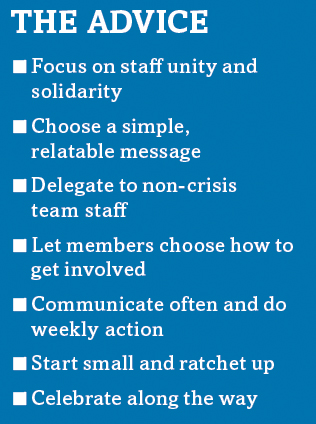 Members were asked to like, share, and retweet those accounts, and it soon became evident that Instagram posts with photos of members in action created the most engagement, Jones said. “Every day I tried to come up with something new using simple phrases and talking points.”
Members were asked to like, share, and retweet those accounts, and it soon became evident that Instagram posts with photos of members in action created the most engagement, Jones said. “Every day I tried to come up with something new using simple phrases and talking points.”
The team stayed in constant contact and offered something for people to do every week, even if it was small actions in between larger asks, such as pushing a social media post or getting a community contact to write a letter to the board, Winn said.
“My worry was if we got people involved to start and then said we’re just going to wait until the next big action three weeks later, we’d be back to organizing at ground zero again because we let all that momentum die away,” he said.
Early on members were asked to indicate what they would be willing to do, and individuals signed up in a Google form for tasks that suited their comfort level and strengths. If someone didn’t want to speak at a board meeting, perhaps they could write a speech for someone else to deliver.
“We ended up with a way better product because we had everybody kind of doing what they were strong at versus us trying to do it all ourselves,” Catherine Hennessy said.
People with graphic design expertise helped create branding for social media posts and a tri-fold brochure with a QR code directing community members to supportive actions they could take, such as calling or writing emails to the board.
“The fact that we stuck to a simple message around time and money helped the community to really understand and react,” Hennessy added. “Parents could drive down the street and see McDonald’s is hiring at 17 or 18 dollars an hour, and then compare that to my kid’s teachers making 19?”
Those who had knowledge of how to write a press release or contacts in the news media helped to garner media attention. A first-year teacher afraid to picket could work behind the scenes making signs and posters for others to carry.
When talks went to mediation and the administration side was slow to schedule sessions, the crisis team ensured the tactic didn’t succeed in draining energy away from the effort, Hennessy said.
“They gave us a bunch of time, I think, as a tactic to draw it out, but we used it to our advantage and really ratcheted up. That’s when we started picketing, and our pickets got bigger and more involved, and then all of a sudden they wanted to meet very, very quickly.”
In addition to attending board meetings of their home districts, large numbers of members turned out to picket at and attend governance council meetings, wearing matching shirts in a show of strength, where members and leaders along with MEA staff spoke to convey the unit’s issues and demands.
The membership was “irate” to learn the talks had stalled with meeting times dragged out after little movement, agreed bargainer Eric LaNoue. “I think that was a catalyst for some anger that was necessary to push the crisis actions forward,” he said.
THE WINS
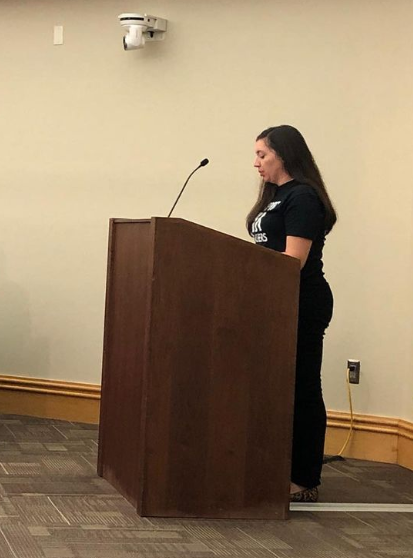
Drew Shankles, an IA music teacher who was part of the bargaining team, stressed the importance of MEA UniServ Director Scott Warrow, whom he said made the team believe in their own worth and abilities, delivered extra resources, and kept motivation running high.
“Scott was my hero, so when they settled and we got so much of what we were asking for, I looked at him and he said, ‘Sometimes we just have to outlast them.’”
Along with a step and significant increases in stipends for extra time worked, the IA teachers succeeded in reducing their work schedule by a week, reducing minutes per week, boosting the extra duty and meetings pay, reducing after-school meetings, and more.
“Just on those demands for more money and less time, we got pretty much everything we asked for,” bargainer Maureen Convery said, adding that language gains were also secured that increase teacher input in decision making and allow more flexible time for planning and record keeping, among others.
In addition to the contract wins, the unit’s membership increased and people understand their contract. “Now we have an IA union newsletter that’s building on this infrastructure and identity,” crisis team member Roger Winn said.
Same with the social media accounts, said fellow crisis team member Ian Jones. “I’ve transitioned our social media pages into a positive place to show off who we are and to keep us connected to each other,” Jones said. “It also keeps the idea in the back of admins’ heads that, ‘Oh, this is a bigger beast now than it ever was before.’”
Winn agreed: “All that we continue doing now keeps the groundwork there for the next time we have to negotiate.”



